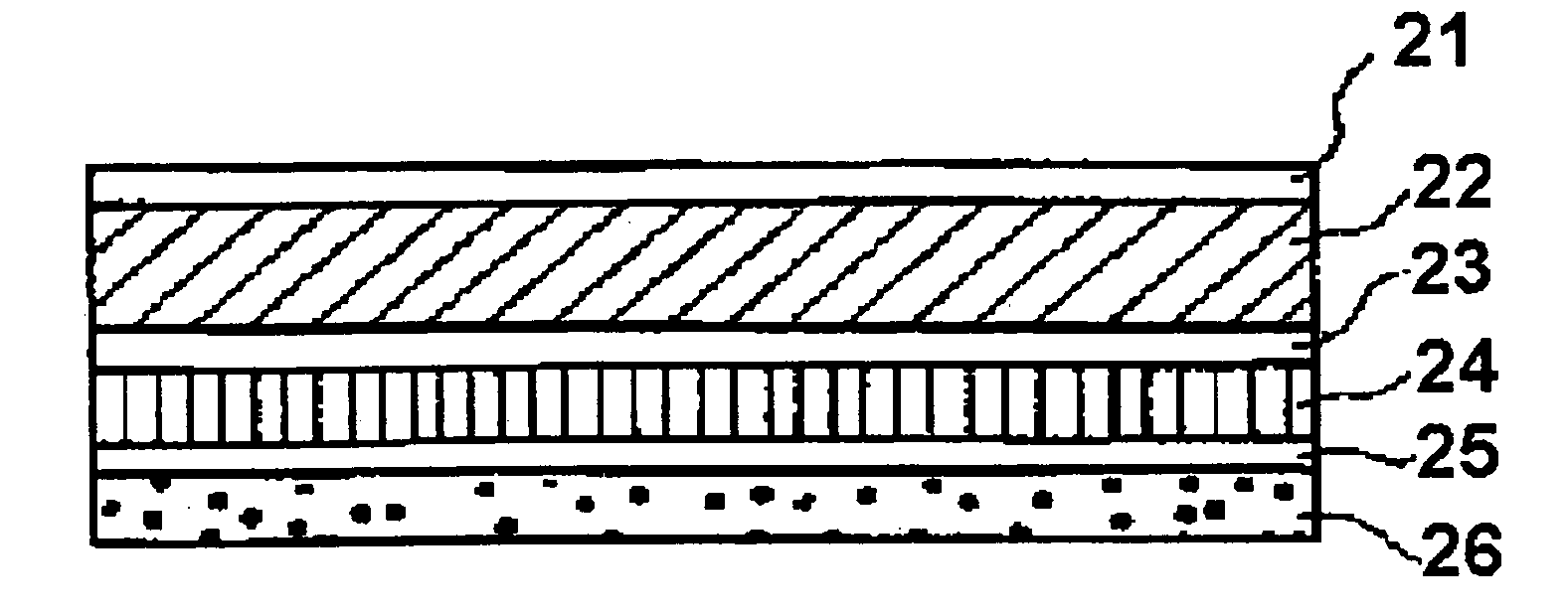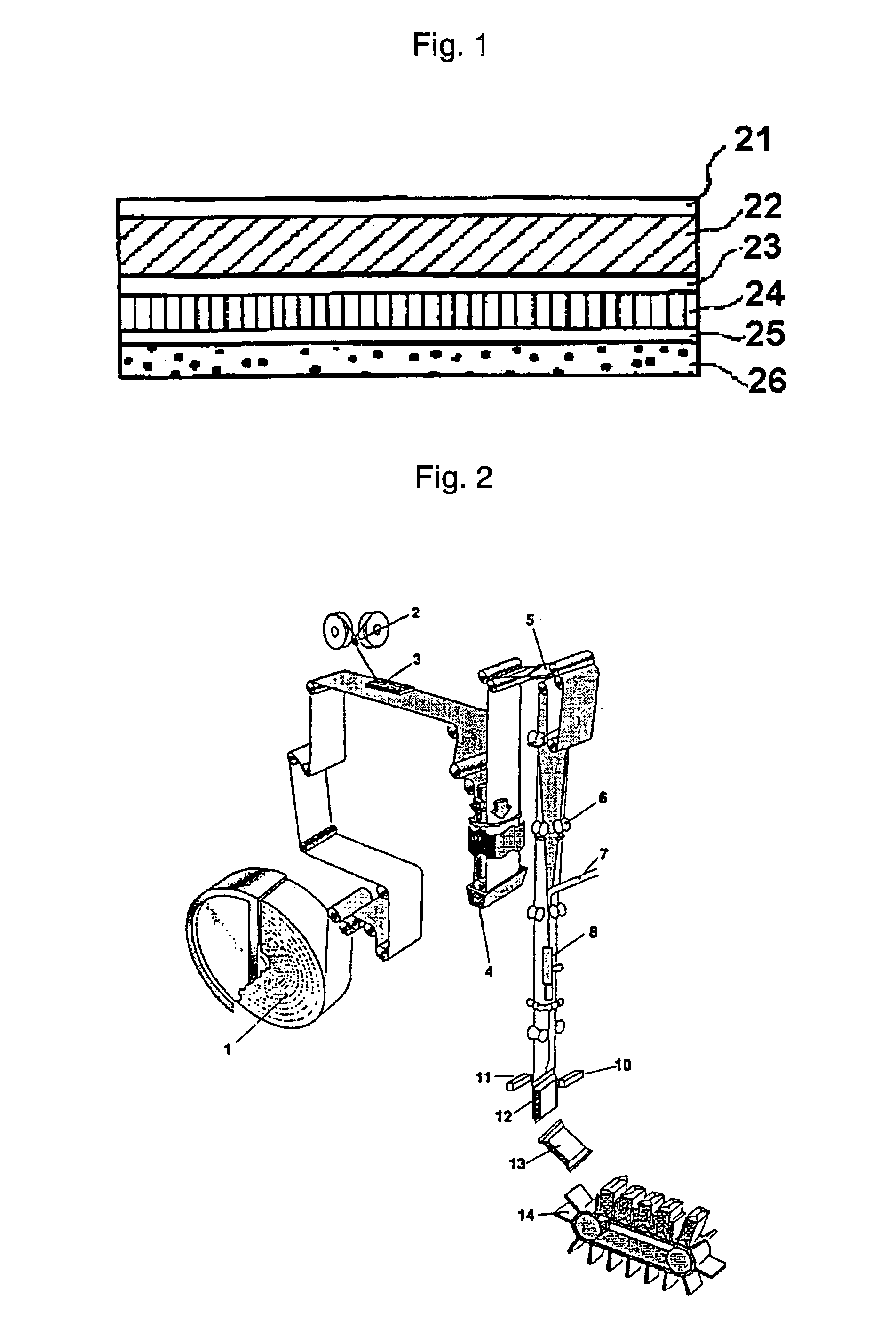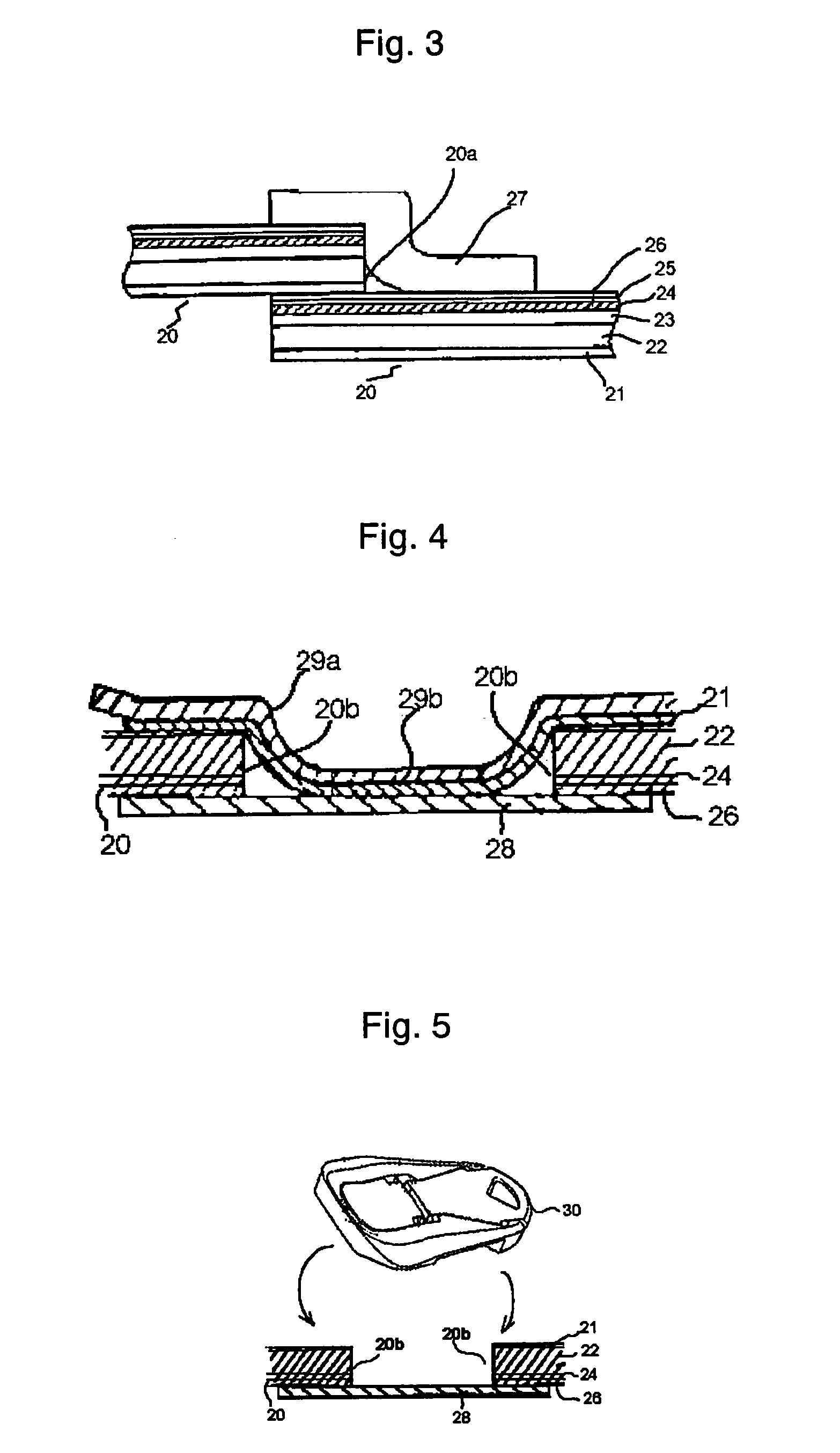Laminated packaging material for paper container
a technology for packaging materials and paper containers, applied in the direction of paper/cardboard containers, flexible covers, containers, etc., can solve the problems of high seal temperature, poor processability, and risk of content taste change, and achieve easy manufacturing, good extrusion-laminating properties, and quick heat sealing
- Summary
- Abstract
- Description
- Claims
- Application Information
AI Technical Summary
Benefits of technology
Problems solved by technology
Method used
Image
Examples
example 1-1
[0086]The linear low density polyethylene (mLLDPE) of the narrow molecular weight distribution which is polymerized with the metallocene catalyst and the low density polyethylene by the high pressure process were blended. Fusion extruding of the layer of the blended adhesives of average density of 0.910, 97-degree C. of peak melting point, melt flow index of 15, swelling ratio of 1.5, and 13-micrometer of layer thickness was carried out to the whole surface of aluminum foil with thickness of 9 micrometers. The linear low density polyethylene (mLLDPE) having the narrow molecular weight distribution which was polymerized with the metallocene catalyst, and the low density polyethylene by the high pressure process were further blended. The thermoplastic material innermost layer obtained with the blend of average density of 0.907, 96-degree C. peak of melting point, melt flow index of 14, swelling ratio of 1.5, and 25-micrometer of layer thickness was laminated, and the laminated film wh...
example 1-2
[0089]Packaging material and the brick type paper container were produced like the example 1-1 except having used the thermoplastic material which blended the linear low density polyethylene (mLLDPE) of the narrow molecular weight distribution which was polymerized with the metallocene catalyst, and the low density polyethylene by the high pressure process instead of the low density polyethylene by the high pressure process of the thermoplastic material outermost layer in an example 1-1. The blended thermoplastic material had average density of 0.915, 95-degree C. of peak melting point, melt flow index of 17, swelling ratio of 1.5, and 18-micrometer of layer thickness. Furthermore, the same evaluation as the above-mentioned example was performed about the obtained paper container and packaging filling. The pattern encaustic color printed by paper-layer external surface penetrated the transparent thermoplastic material outermost layer, and was vividly viewed from the outside with glo...
example 1-3
[0090]The packaging material and the brick type paper container were produced like the example 1-1 except having used for a 8-micrometer polyester film the barrier film which vapor deposited the silicone oxide (SiOxCy) by the plasma enhanced chemical vapor deposition instead of the aluminum foil in an example 1-1. Furthermore, it is similarly estimated as an example about the obtained paper container and packaging filling.
PUM
| Property | Measurement | Unit |
|---|---|---|
| melting point | aaaaa | aaaaa |
| thickness | aaaaa | aaaaa |
| thickness | aaaaa | aaaaa |
Abstract
Description
Claims
Application Information
 Login to View More
Login to View More - R&D
- Intellectual Property
- Life Sciences
- Materials
- Tech Scout
- Unparalleled Data Quality
- Higher Quality Content
- 60% Fewer Hallucinations
Browse by: Latest US Patents, China's latest patents, Technical Efficacy Thesaurus, Application Domain, Technology Topic, Popular Technical Reports.
© 2025 PatSnap. All rights reserved.Legal|Privacy policy|Modern Slavery Act Transparency Statement|Sitemap|About US| Contact US: help@patsnap.com



